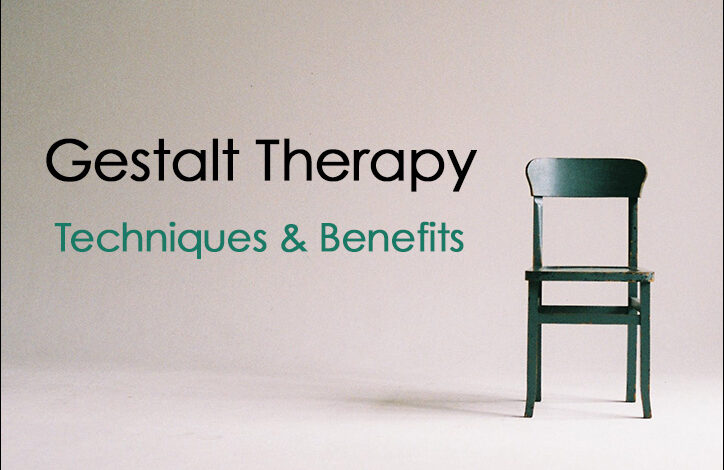Gestalt Therapy Techniques: A Path to Wholeness

Gestalt therapy techniques offer a powerful and human-centered approach to mental health and personal growth. Rooted in the principle of living in the “here and now,” these techniques empower individuals to achieve self-awareness, resolve internal conflicts, and foster authentic connections with others.
This article will walk you through the fundamentals of Gestalt therapy techniques, their benefits, and how they can be applied to everyday life. If you’re curious about this transformative method, you’re in the right place!
What Is Gestalt Therapy?
Gestalt therapy is a form of psychotherapy developed by Fritz Perls in the 1940s. It emphasizes self-awareness, personal responsibility, and living in the present moment. The term “Gestalt” comes from German, meaning “whole” or “complete,” reflecting the therapy’s focus on understanding the entirety of a person’s experience.
Rather than analyzing past events in isolation, Gestalt therapy techniques help individuals uncover patterns in their thoughts, feelings, and behaviors to better integrate their experiences.
Why Use Gestalt Therapy Techniques?
Gestalt therapy techniques are highly effective for addressing various emotional and psychological challenges. They help people:
- Improve self-awareness
- Manage stress and anxiety
- Resolve past traumas
- Strengthen relationships
- Boost self-confidence and decision-making
The versatility of these techniques makes them suitable for individuals, couples, and even groups.
The Core Principles of Gestalt Therapy
To better understand Gestalt therapy techniques, it’s essential to explore their foundational principles:
- Here and Now: The focus is on the present moment rather than dwelling on the past or worrying about the future.
- Wholeness and Integration: Emphasizing the connection between mind, body, and emotions.
- Personal Responsibility: Encouraging individuals to own their feelings, actions, and choices.
- Self-Awareness: Developing a deeper understanding of oneself to identify and address unresolved issues.
These principles guide all Gestalt therapy techniques, creating a holistic approach to healing and growth.
Key Gestalt Therapy Techniques
Empty Chair Technique
This classic Gestalt therapy technique involves using an empty chair to represent a person, emotion, or part of yourself that you want to confront. By speaking to the chair as if the subject were present, you can explore unresolved feelings, clarify thoughts, and release emotional tension.
- How It Works:
- Sit facing the empty chair.
- Imagine the person or situation you need to address sitting in that chair.
- Express your thoughts and feelings aloud.
This technique promotes emotional release and deeper self-awareness.
Role-Playing
Role-playing allows you to step into someone else’s shoes or explore different parts of yourself. It helps to uncover hidden emotions, gain new perspectives, and build empathy.
- Applications:
- Resolving conflicts in relationships
- Exploring inner dilemmas
- Practicing assertive communication
Body Awareness
Gestalt therapy places great emphasis on the connection between body and mind. By becoming more aware of physical sensations, individuals can better understand their emotions and triggers.
- Example Exercises:
- Scanning your body for tension or discomfort.
- Noticing how your posture or breathing changes with different emotions.
- Practicing mindfulness to connect with the present moment.
Guided Imagery
This technique uses visualization to help individuals explore emotions, memories, or goals. A therapist might guide you through a scenario to uncover feelings or discover insights.
- Benefits:
- Reduces stress
- Enhances creativity
- Helps process difficult experiences
Awareness Through Language
Gestalt therapy techniques often involve paying close attention to the language you use. Phrases like “I can’t” or “I should” can reflect inner conflicts or limiting beliefs.
- How It Helps:
- Replacing passive language with active, empowering statements.
- Identifying self-critical or negative thought patterns.
- Encouraging ownership of your emotions and choices.
Table: Benefits of Gestalt Therapy Techniques
| Technique | Benefit |
| Empty Chair | Resolves unresolved feelings |
| Role-Playing | Builds empathy and self-understanding |
| Body Awareness | Connects emotions with physical sensations |
| Guided Imagery | Processes emotions and reduces stress |
| Awareness Through Language | Encourages self-empowerment |
Everyday Applications of Gestalt Therapy Techniques
Gestalt therapy techniques aren’t just for therapy sessions—they can also be applied in daily life to improve mental and emotional well-being.
Practicing Mindfulness
Mindfulness aligns closely with Gestalt therapy’s focus on the present moment. Try simple practices like:
- Focusing on your breath.
- Noticing sensations in your body.
- Observing your surroundings without judgment.
Journaling
Writing down your thoughts and feelings can help you process emotions and gain clarity. Incorporate Gestalt principles by exploring how different parts of your experience connect.
Honest Communication
Using techniques like role-playing or awareness through language can enhance your interactions with others. Practice speaking honestly and taking responsibility for your feelings.
Who Can Benefit from Gestalt Therapy Techniques?
Gestalt therapy techniques are suitable for anyone looking to grow emotionally, resolve conflicts, or enhance self-awareness. They’re particularly helpful for:
- Individuals struggling with anxiety, depression, or trauma.
- Couples seeking to improve their relationships.
- People facing significant life transitions or decisions.
- Those wanting to reconnect with their authentic selves.
How to Get Started with Gestalt Therapy
If you’re interested in trying Gestalt therapy techniques, consider the following steps:
- Find a Trained Therapist: Look for a certified Gestalt therapist with experience in your areas of concern.
- Set Clear Goals: Think about what you want to achieve through therapy.
- Practice Self-Reflection: Start exploring your thoughts and feelings to prepare for the process.
- Stay Open-Minded: Embrace the journey of self-discovery, even if it feels challenging at times.
Final Thoughts on Gestalt Therapy Techniques
Gestalt therapy techniques offer a compassionate and practical approach to healing and personal growth. By focusing on the “here and now” and fostering self-awareness, these techniques can help you overcome challenges and build a more fulfilling life.
Whether you try the empty chair technique, role-playing, or mindfulness exercises, Gestalt therapy techniques have the potential to unlock your inner strength and guide you toward wholeness.
Embrace these techniques today and take the first step toward greater self-awareness and emotional well-being. After all, the key to transformation lies in living fully in the present moment.





